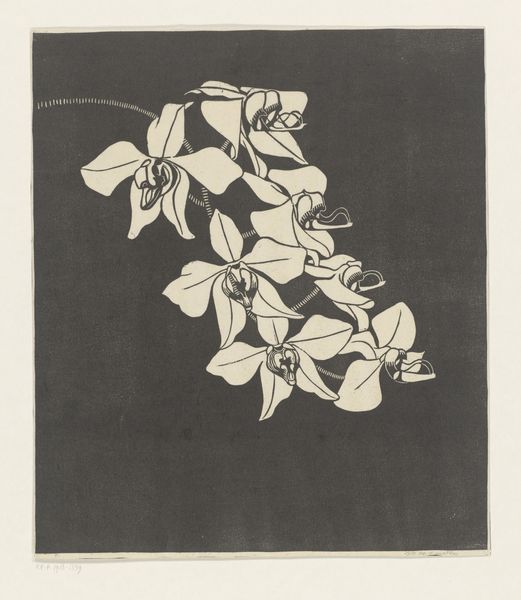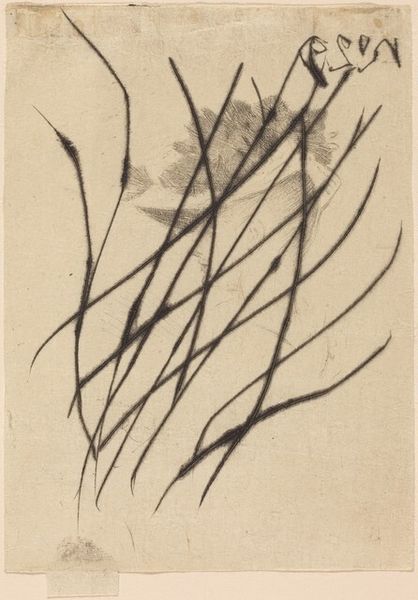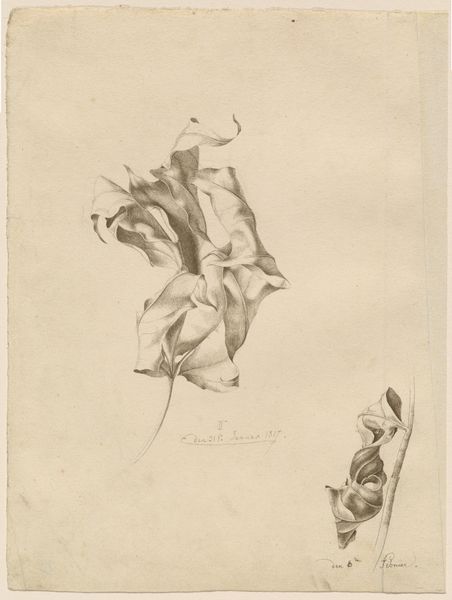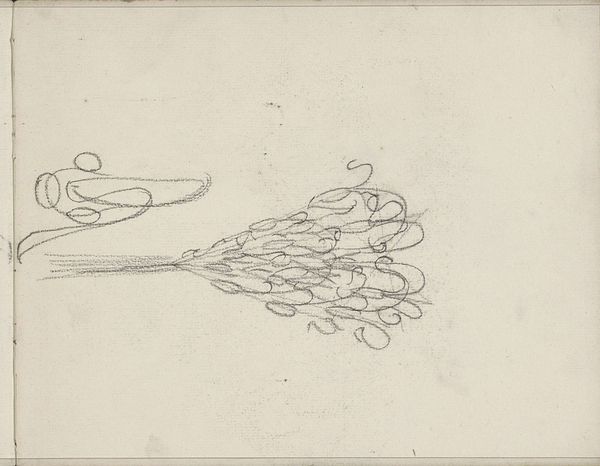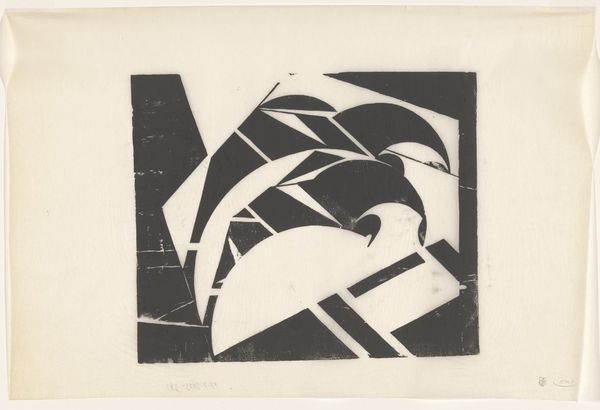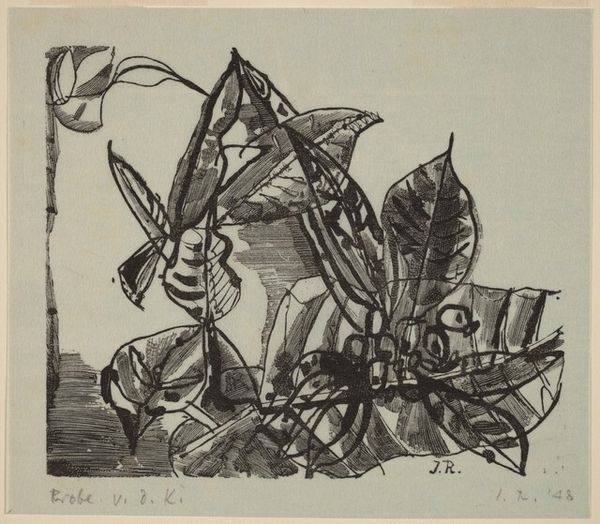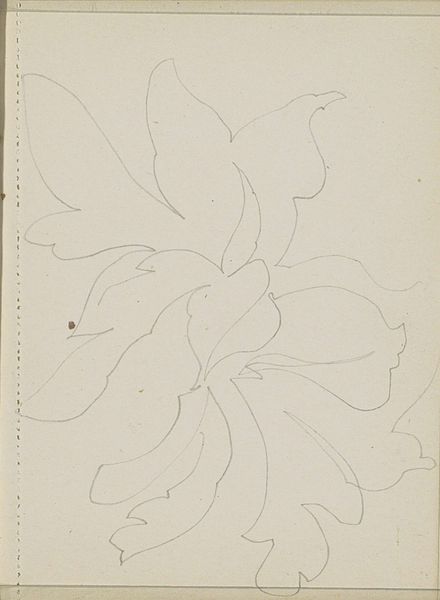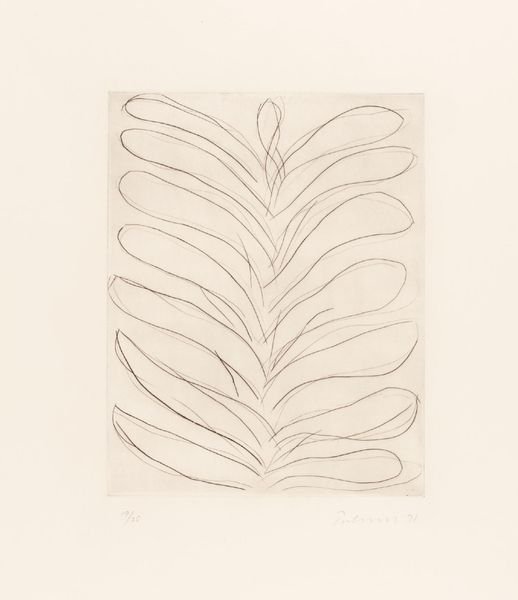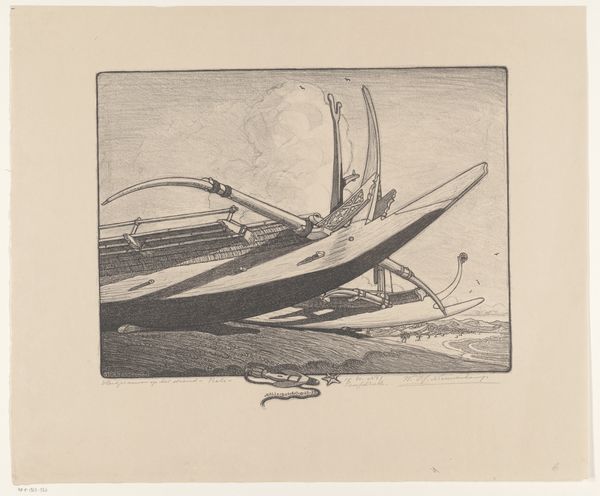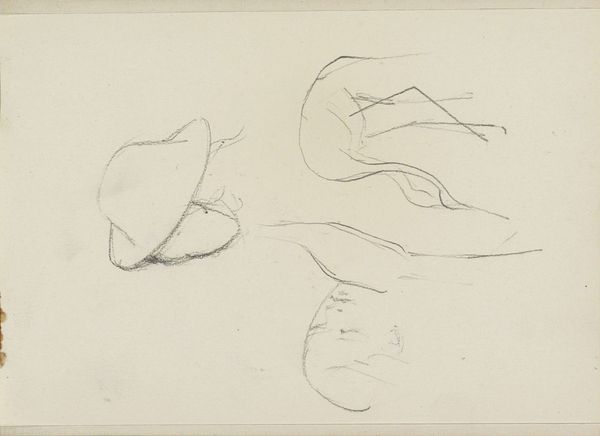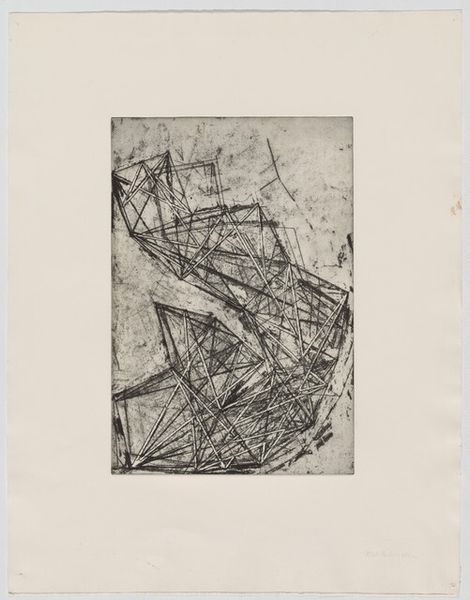
print, etching
# print
#
etching
#
constructivism
#
form
#
abstraction
#
line
#
surrealism
Dimensions: plate: 14.7 × 10.6 cm (5 13/16 × 4 3/16 in.) sheet: 32.7 × 25.4 cm (12 7/8 × 10 in.)
Copyright: National Gallery of Art: CC0 1.0
Editor: This is Stanley William Hayter’s "Bride," an etching from 1934. The lines feel so dynamic and almost chaotic, like a machine breaking down or maybe something struggling to be born. How do you interpret this work? Curator: It's interesting that you see chaos, because Hayter was very much engaged with Constructivism at this time. Those intersecting lines, though seemingly random, were often a deliberate exploration of form and space influenced by artists fleeing Nazi Germany and landing in Paris. What do you think about the title, "Bride," in connection to the forms? Editor: I honestly don’t see the bride! Maybe that central, slightly blurred shape is a head? It's hard to connect it to a literal image. Curator: Exactly! It is not about representing a bride realistically, but perhaps about the social constructs surrounding marriage itself. Hayter uses Surrealist techniques like automatism to delve into the unconscious and critique these conventional societal roles. Considering this was produced in 1934, what does that era say to you about traditional forms? Editor: So, maybe the fragmented form reflects a breakdown of traditional views about women and marriage? Curator: Precisely. Look at the sharp angles, the lack of clear form… Do these elements suggest celebration or critique to you? Hayter used these abstract shapes to provoke conversation about cultural norms that constrict women's identities. Editor: I see it now! The harshness isn't just aesthetic; it's part of a bigger message questioning the institution. Curator: Right! So we can consider this “Bride” less a portrait and more a socio-political statement, etched in a time of enormous cultural and political tension. It speaks to the necessity of engaging critically with these social concepts that should be interrogated. Editor: It’s amazing how much depth there is behind what I first saw as just lines! I'll definitely approach abstract works differently now, always thinking about that broader social context.
Comments
No comments
Be the first to comment and join the conversation on the ultimate creative platform.

